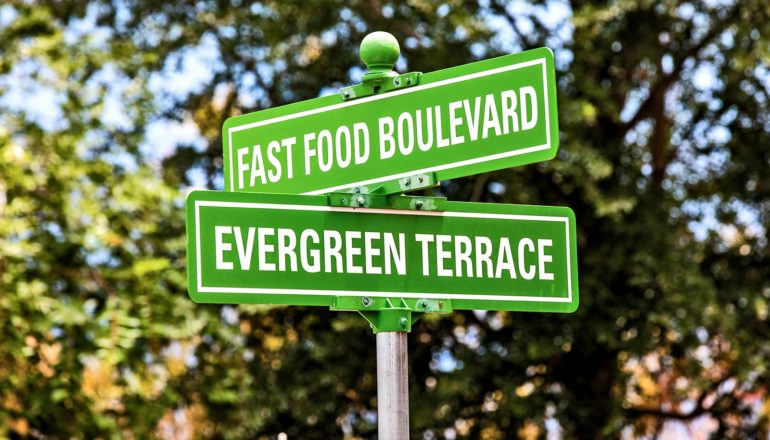
Living in a neighborhood with higher availability of fast-food outlets across all regions of the United States is associated with higher subsequent risk of developing type 2 diabetes, a new study shows.
Increasing number of studies suggest a link between a neighborhood’s built environment and the likelihood that its residents will develop chronic diseases such as heart disease, type 2 diabetes, and certain types of cancers.
The findings of the new study in JAMA Network Open also indicate that the availability of more supermarkets could be protective against developing type 2 diabetes, particularly in suburban and rural neighborhoods.
The study—notable for its large geographic breadth—uses data from a cohort of more than 4 million veterans living in 98% of US census tracts across the country. It counted fast-food restaurants and supermarkets relative to other food outlets, and is the first, according to the researchers, to examine this relationship in four distinct types of neighborhoods (high-density urban, low-density urban, suburban, and rural) at the hyperlocal level nationwide.
“Most studies that examine the built food environment and its relationship to chronic diseases have been much smaller or conducted in localized areas,” says lead author Rania Kanchi, a researcher in the Department of Population Health at New York University Langone.
“Our study design is national in scope and allowed us to identify the types of communities that people are living in, characterize their food environment, and observe what happens to them over time. The size of our cohort allows for geographic generalizability in a way that other studies do not.”
Prevalence of diabetes
The research team used data from the US Veterans Health Administration (the largest single-payer healthcare system in the country) that captures more than 9 million veterans seen at more than 1,200 health facilities around the country.
Using this data, the researchers then constructed a national cohort of more than 4 million veterans without diabetes from the VA electronic health records (EHR) between 2008 and 2016. Each veteran’s health status was followed through 2018 or until the individual either developed diabetes, died, or had no appointments for more than two years.
Within each of four distinct neighborhood types, the proportion of restaurants that were fast food and the proportion of food outlets that were supermarkets were tabulated within a one-mile walk in high-density urban neighborhoods, a two-mile drive in low-density urban neighborhoods, a six-mile drive in suburban communities, and a 10-mile drive in rural communities.
Researchers followed veterans for a median of five and a half years. During that time, 13.2% of the cohort were newly diagnosed with type 2 diabetes. Males developed type 2 diabetes more frequently than females (13.6% versus 8.2%).
Non-Hispanic Black adults had the highest incidence (16.9%), compared to non-Hispanic Whites (12.9%), non-White Asian and Hispanics (12.8%), Native Hawaiian and Pacific Islanders (15%), and Native American and Alaskan Indians (14.2%). When stratifying by community types, 14.3% of veterans living in high-density urban communities developed type 2 diabetes, while the lowest incidence was among those living in suburban and small town communities (12.6%).
Would more supermarkets help?
Overall, the team concludes that the effect of the food environment on type 2 diabetes incidence varied by how urban the community was, but did not vary further by region of the country.
“The more we learn about the relationship between the food environment and chronic diseases like type 2 diabetes, the more policymakers can act by improving the mix of healthy food options sold in restaurants and food outlets, or by creating better zoning laws that promote optimal food options for residents,” says senior author Lorna E. Thorpe, a professor in the population health department.
One limitation of the study, according to the authors, is that the study may not be fully generalizable to non-veteran populations, as US veterans tend to be predominantly male and have substantially greater health burdens and financial instability than the civilian population. They are also at greater risk of disability, obesity, and other chronic conditions.
The next phase of the research, say Thorpe and Kanchi, will be to better understand the impacts of the built environment on diabetes risk by subgroups. They plan to examine whether or not the relationships between fast-food restaurants, supermarkets, and community types vary by gender, race and ethnicity, and socioeconomic status.
Additional coauthors are from the Centers for Disease Control and Prevention, George Mason University, and NYU. The US Centers for Disease Control and Prevention and the National Institutes of Health supported the work.
Source: Sasha Walek for NYU
The post Does more fast food in the neighborhood up diabetes risk? appeared first on Futurity.
from Futurity https://ift.tt/3q0isw2
No comments:
Post a Comment